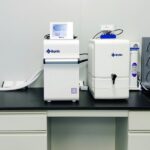In 2007, Rebecca Kase began practicing psychotherapy in private practices, shelters, crisis centers, and outpatient and inpatient mental health settings. A decade later, she founded Kase & CO, a training and consultation practice to empower therapists through continuing education.
As an experienced practitioner of EMDR Therapy and a professional educator, Kase introduces thousands of therapists to a revolutionary trauma treatment that brings real and lasting healing.
How Rebecca Kase employs EMDR Therapy with patients
Eye Movement Desensitization and Reprocessing (EMDR) therapy helps people deal with the buried trauma in their lives. For whatever reason, the human nervous system sometimes stores distressing memories and experiences in unproductive ways. EMDR enables patients to reprocess this trauma and reshape how they see the world around them.
Francine Shapiro first developed EMDR therapy in 1987 to treat post-traumatic stress disorder (PTSD). After three decades of research, the practice is evidence-based, widely studied, and proven to treat a wide range of mental issues, including anxiety, depression, addiction, chronic pain, grief, and eating disorders.
EMDR rests on a model called Adaptive Information Processing (AIP). According to AIP, when experiences are overwhelming, traumatic, or distressing, they can become “stuck” before the brain can properly process them. “When experiences and emotions get stuck in our brains, they can cause many undesirable psychological and physical symptoms,” says Kase. “EMDR enables us to unlock these buried memories and allow our minds to process them healthily and productively.”
The key that unlocks buried trauma is known as bilateral stimulation (BLS). In essence, bilateral stimulation uses sight, sound, or touch to stimulate both sides of the brain and create a soothing, relaxing effect. People can practice the technique by placing their hands on opposite shoulders and alternately tapping each shoulder in a steady pattern, or even through activities such as walking and jogging.
EMDR therapists stimulate the brain and body in various ways. Some employ a light bar with pulsing lights that move from one side to the other, while others give clients vibrating pulsars to hold in each hand. Still, other therapists use headphones with chimes rhythmically alternating from left to right.
Why EMDR Therapy can bring healing
Bilateral simtulation is believed to activate a similar process as experienced in REM sleep, while also taxing working memory allowing a distressing experience to integrate and reconsolidate.
“Have you ever felt worried or upset and suddenly become inexplicably tired?” asks Kase. “This is your brain letting you know it has an overload of emotions and experiences to process. We often go to sleep frustrated, worried, and confused, but we wake up with renewed clarity and motivation because you’ve given your brain the time it needs to process.”
People’s nervous systems have an incredible capacity to heal and integrate information. EMDR therapy relies on the innate power of the nervous system using a researched protocol to access and stimulate a maladaptively stored memory. The application of bilateral stimulation then allows the unprocessed experience to reprocess resulting in a reduction of distress, vividness, and emotionality.
“EMDR is not just a technique,” Kase explains. “It is an eight-phase therapeutic orientation. We help clients identify and target the experiences that are stuck in their minds. Then, we help them recall the emotional, cognitive, and somatic aspects of those experiences through a structured process involving bilateral stimulation. During processing, they experience thoughts, memories, emotions, or somatic sensations. Ultimately, they are able to reprocess the memory so that when it is recalled they experience a sense of neutrality or peace. The distressing material is discarded, and symptoms related to the memory dissipate.”
How Kase & CO train therapists to use EMDR with their patients
Kase is a thought leader in the field of trauma therapy and self-healing. “When you understand the root cause of your trauma and discover how to cope with those feelings, the pain no longer has the power to hold you back,” she explains. “Instead, you find the path to healing and your wisest and most resilient self.”
Today, Kase not only directs people as they experience transformative healing journeys, but also helps therapists explore the same life-changing techniques. “Our comprehensive approach to EMDR training uses engaging experiences to help therapists deepen their practice,” Kase remarks. “We teach through the lens of Polyvagal Theory, which considers the deep connection between our brain and body. Throughout the sessions, we incorporate practical mindfulness techniques like guided meditation, yoga, and breathing exercises. These tools are excellent for patients and help therapists regulate their nervous system while learning as well.”
Kase realizes that therapists need a safe place to explore new techniques and make mistakes as they learn. For this reason, her sessions offer inclusive, shame-free learning environments.
“We approach teaching in a way that allows everyone to be vulnerable,” says Kase. “We have fun, laugh, and bring authenticity to the table. In sharing our successes and mistakes, we show up with honesty, humility, and bravery.”
















